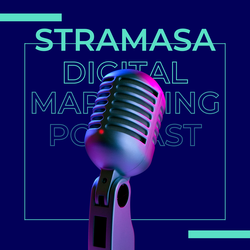The term was first popularized by a guy who goes by the name of Jay Conrad Levinson. Jay’s 1984 book Guerrilla Marketing was so successful that it was named by Time Magazine as one of the top 25 most influential business management books, selling over 21 million copies. It was so influential, that it has been dubbed as one of the top marketing books ever written and has since been translated into 62 different languages worldwide.
Is Guerrilla Marketing effective?
Guerrilla marketing can be an incredibly effective marketing campaign, particularly for small businesses. It’s low-cost and makes use of tactical strategies like word of mouth, viral marketing, or ambient marketing that have proven again and again to be very effective.
By its subtle, canny, and creative nature, guerrilla marketing is a great way to boost brand awareness, brand loyalty, and brand exposure.
How much does Guerrilla Marketing cost?
One of the things that make guerrilla marketing strategies so attractive for many companies is that it’s cost-effective. Guerrilla marketing draws upon creativity and inspiration, instead of monetary investment.
Just like a guerrilla fighter, guerrilla marketers have to be crafty, artful, and rather innovative when developing good guerrilla marketing tactics. In a sense, they use low-cost and unconventional methods to not only draw the attention of new customers to their brand but also to repurpose old marketing techniques to further engage their current customers.
So what kind of guerrilla marketing can you leverage to promote your business?
Let’s take a look.
Types of Guerrilla Marketing
There are many different ways to stealthily practice guerrilla marketing. Depending on your marketing budget and the overall creativity of your marketing team, you may want to try one of these different types of guerrilla marketing.
1. Event Ambush Marketing
Out of all the marketing ideas you’ve heard of, this one probably sounds like one of the weirdest. Bear with me though, event ambush marketing simply leverages the attention of an audience that is currently attending an event or while in a captive setting.
Usually something like a sporting event, music gig, or even while in a subway station.
A person within this setting is either reluctant to leave, as they’ve paid to be there, or is so interested in what is unfolding in front of them that they simply can’t miss the action.
These kinds of settings offer guerrilla marketers a very unique opportunity that they don’t often get: their audience’s involuntary yet undivided attention.
Stella Artois pulled this off in an epic (and controversial) campaign at the 2011 US Open where they placed their ads around the event as if they were the official sponsor (though they were not).
The upfront costs of an event ambush marketing aren’t that expensive. Often, an event ambush occurs without the permission of an event sponsor. Therefore, it is a very affordable yet impactful form of marketing.
Examples of Event Ambush Marketing
- Flash mobs – A flash mob is a group of people or performers who suddenly, and often without warning, will ambush a public area, draw event-goers’ attention, perform for a brief time, and then quickly disperse.
- Tactically placed signage – Just because you aren’t a sponsor of an event, doesn’t mean you can take advantage of crowds of people flocking into a concentration area. The use of signage on the streets outside of an event can be very powerful.
Astroturfing (Paid Endorsements)
Astroturfing is among one of the more controversial and arguably less tactful guerrilla marketing strategies. Just like AstroTurf is artificial grass that mimics the real thing, AstroTurf marketing uses fake endorsements to mimic social proof.
The most common form of astroturfing that we will see in modern marketing involves some sort of hype or publicity. This hype is usually generated through online blogs, online forums, or even at a place of business.
A perfect example of this is McDonald’s admitting that they compensated around 1,000 customers. The paid customers stood in line for a quarter pounder in one of their Japanese restaurants, appearing as if they simply couldn’t wait to get a hold of one of McDonald’s most famous burgers.
Individuals are also paid to leave positive reviews, give positive testimonials, or comment positively about a company’s products or services often on a form of social media.
Examples of Astroturfing Marketing
- Influencer marketers – The use of influencer marketers can be a very powerful way of exposing your product to a large following. Influencers, in a sense, astroturf their followers by promoting a product that they claim they love and trust, meanwhile being paid to say so.
- Affiliate marketers – The use of affiliate marketers is another great example of astroturfing. Popular bloggers, YouTube stars, etc. promote a product to their followers and, in return, receive a cut of any sales made.
Buzz Marketing
Buzz marketing is the antithesis of astroturfing. It leverages genuine endorsements, particularly from high-profile individuals or celebrities, and uses this to increase their brand awareness and brand exposure.
A very cute yet prime example of buzz marketing is these Tweets from a couple of Starbucks customers. They’ve connected a quite emotional yet positive and organic experience with the Starbucks brand. Not only helping Starbucks’ image but also promoting their products.
Buzz marketing can be incredibly effective but often hard to generate as it often occurs without warning and without encouragement. But as hard as it is to obtain, buzz marketing is incredibly cost-effective as it usually requires minimal involvement as it’s a naturally occurring phenomenon.
Examples of Buzz Marketing
- Controversial content – People love a good dose of controversy, something a little bit scandalous is great to gossip about. Why not use this to your advantage, and create content that gets people talking.
- Bizarre marketing – Try stepping outside of the marketing norm. Something a little whacky and out of the ordinary is another great way to get people talking about your brand and will help to encourage consumers to share your content with friends.
Experiential Marketing
Experiential marketing is a guerrilla marketing strategy that encourages and engages customers to participate in the growth and success of a business. Rather than the traditional marketing model, where customers are passive participants in consuming advertising messages, experiential marketers hold the belief that customers should be active participants in a marketing campaign.
Examples of Experiential Marketing
- Step out of your comfort zone – If your business centers around something a bit contentious and hard to talk about, why not create an experience that will prompt conversation.
- Gamify your product – Why not add a little fun into people’s lives and gamify your brand. Give your customers the opportunity to play and compete for something, along the way instilling a sense of accomplishment and positive emotional connection with your products.
Grassroots Marketing
Grassroots marketing is one of those guerrilla marketing campaigns that is especially effective for small businesses. Instead of spending big bucks on elaborate advertising ventures, a brand can engage with their target audience through a common course or mutually shared vision.
A grassroots guerrilla marketing usually targets a small customer base and hopes that the group will spread a business’ message or vision to a much larger audience.
Grassroots marketing often makes use of less traditional, unconventional, and creative marketing strategies. Therefore, it normally costs less than more conventional marketing ideas while still having the potential to produce big results.
Examples of Grassroots Marketing
- Use emotional marketing – Utilizing people’s emotions is one of the most effective ways of getting them to share your brand’s message and products.
- Support a good cause – Being seen as the good guy can drastically improve how the public eye views your business. The desire to help a noble cause can give grassroots campaigns a massive boost in popularity.
Stealth Marketing
Stealth marketing is a guerrilla marketing campaign that targets customers through subtle and creative marketing strategies. More often than not, this form of marketing advertises a product or service to a person without them realizing they are being marketed.
There are many tactic strategies that stealth marketers use, the most familiar being product placement and undercover marketing. As seen here by FedEx in Tom Hanks’ very popular film, Castaway.
The main goal of stealth marketing is not to generate immediate revenue or sales but to instead create awareness, interest, and excitement around a brand and its products. This advertising strategy will likely lead to consumers being more receptive to direct advertising later on down the road.
And it’s a low-cost marketing strategy that can be incredibly valuable to a business.
While implementing a guerrilla marketing campaign such as stealth marketing, marketers can do away with repetitive and costly marketing exposure and rather focus on cost-effective strategies like product placement.
Examples of Stealth Marketing
- Product placement – The placement of a paid product incorporated within another body of work. Usually film or television programs with specific promotional intentions.
- Undercover Marketing – A marketer or advertiser introduces a product to consumers in a way that doesn’t at all look like marketing. It is a little unconventional and rather sneaky but it can be an incredibly powerful marketing strategy.
Street Marketing
Street marketing campaigns use relatively nontraditional methods and advertising spaces to gain a greater amount of brand awareness and consumer attention than traditional ad campaigns.
You’ll find street marketing placed in locations where often people wouldn’t expect to find it. Consumers expect to see advertising billboards mounted high into the sky, they expect to see ads running on eye-height screens as they walk along city streets, but they often don’t expect to see ads printed on manhole covers, infused within street art, or printed across street crosswalks.
Consumers are used to seeing advertisements on city billboards and the like but they are not used to spotting ads in creative and unconventional locations.
And this is the whole point, spotting unexpected ads often makes people take notice. It may only be a moment but it’s just enough to make them start thinking about a business’ product which, more often than not, is enough to lead to a sale later on.
Examples of Street Marketing
- Product placement – It’s an oldie but a goody. Product placement, no matter where it appears, can have lasting effects on your business. Not only in the immediate future but for a long time to come.
- Undercover marketing – Similar to product placement, undercover marketing introduces a new product to consumers in a way that doesn’t look like an advertisement. It’s quite a powerful marketing technique, marketing when people don’t realize they are being marketed to. It’s often quite subliminal and flies below the radar and yet, it can be incredibly effective.
Final Thoughts
Guerrilla marketing is a seriously powerful form of marketing, and if implemented well can be the low-cost, yet potent marketing strategy that your business could use to break ahead of the competition.
Just like any good guerrilla fighter, throw in a few unorthodox methods, toss in a bit of risk, and be prepared to be a bit controversial. You’ll be well on your way to taking your business to the next level.
Get in touch
Got a project or do you have any questions for us?
Let’s have a virtual coffee and talk about your challenge.
We are a full-service agency offering strategic marketing services
Our industry experience and market research make the difference
With any industry, understanding how to most effectively approach the market is crucial to growing a business. If you’re looking for help from a digital marketing agency it pays to choose one that already understands your industry and your customers. Take a flying start with Stramasa as your B2B digital agency partner thanks to our industry insights, local & global learnings and understanding of your ideal brand positioning for your target audience in your sector. We’re always eager to deepen our expertise & learn about new industries so let’s connect!
Request An Introduction Meeting
Book A Consultation
Ready to grow your business together? Let’s connect!
Contact & Availability
Email: info@stramasa.com
Monday to Friday: 9:00 AM to 10:00 PM
Saturday: 9:00 AM to 5:00 PM
Sunday: 9:00 AM to 5:00 PM
Let’s Connect
Our expertise makes the difference

Our international offices & local teams
NA – United States (USA) – New York (NYC), Miami, Orlando, Florida, Denver, San Diego, Chicago, Houston, Austin, Texas, Boston, Los Angeles, Washington, Seattle, Philadelphia, Portland, Ohio, Minneapolis, New Jersey, Cleveland, Columbus, Richmond, Indianapolis, Phoenix, Arizona | Canada – Toronto, Vancouver, Montreal, Calgary, Edmonton, Ottawa EMEA – Europe – Brussels – Belgium, London, Manchester, Dublin, Brisbane, Bristol, Newcastle – UK | Glasgow, Scotland | Ireland | Dubai – U.A.E. |Turkey | Berlin, Hamburg Germany | Amsterdam, The Netherlands, Barcelona Spain, Rome, Italy | Beijing, Chennai, China APAC & ASEAN – Manila – Makati – Philippines | Osaka, Tokyo, Kyoto – Japan | India – Mumbai, Delhi, Bangalore | Singapore | Bali, Jakarta, Indonesia | Kuwait | Pakistan | Jeddah, Saudi Arabia | Hong Kong | Thailand | Australia – Melbourne, Sydney LATAM – Brazil














